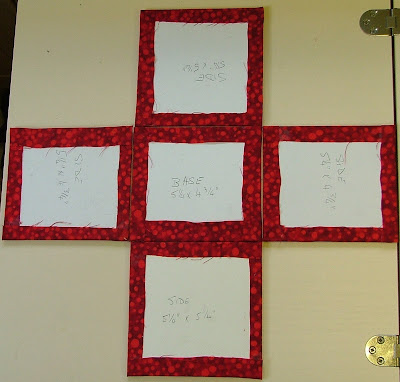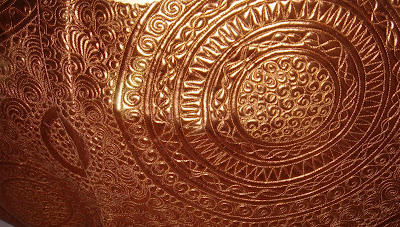As it has been Festival of Quilts at the NEC this week, I am
honour-bound to let you see some of the pictures I took at the show. As a group, we had a wonderful couple of days
there, staying in the Hilton Hotel and enjoying the camaraderie that has
developed over the years of slaving away over a hot group quilt! We didn’t get
anywhere this year with our quilt, perhaps because we decided to do something
different for a change. We chose to do a repeat block, learned how to dye our
background fabric with transfer papers (I certainly won’t be using Avalon again
in a quilt-making context!), created the flowers to our own taste, added background
quilting, joined accurately, beaded … you name it, we did it! But, disappointingly,
the quilt didn’t hang well or show to its best advantage. Back to the drawing
board!
‘Petal mania’ by the Elderflowers
Here’s the winner of the Amateur Quilt, Traditional Quilt
and Best in Show.
Best in show (Hand applique, reverse applique and quilting)
There was the usual mix of quilts (traditional, contemporary,
art, group, 2-person, three-dimensional) with an estimated 1000 quilts on show if
you include the internal exhibitions. It has always amazed me how quilting has
developed from the humble utilitarian bed quilts into dynamic wall art. Perhaps
it is because we have purpose-made sewing machines, long arm quilting machines,
and computer technology at hand to help us. Here are some quilts to illustrate the
variety.
Pictorial David Tennant (computer generated and machine
pieced)
Miniature (free-machine drawing)
Contemporary (machine pi eced and machine quilted)
Contemporary log cabin (dimensional wall hanging)
Detail: Individual shapes
Miniature whole cloth (superbly and minutely machine quilted)
Coracle with quilted sides ( Aside: Beautifully done and definitely different
but what makes someone wake up in the morning and say to themselves, ‘I think I’ll
start to make a quilted coracle today’ … and how do you store it?)
Detail of sides
Winner of group quilts, right side (Dimensional wall
hanging, very clever)
Winner of group quilts, left sides
String piecing (Aside: After my traditional string-pieced
efforts in previous blogs, it was lovely to see one done with such wonderful
colour, free-style embellishment, raw edges and machine embroidery)
Detail string piecing
3 dimensional pebbles (felting and stitch)
Graffitti (painted surface and machine quilting)
Decorative hanging (sheers and threads)
Daily blog (Aside: Takes some stamina and imagination to keep this going as a daily
diary.)
Emails of a failed love affair (Aside: a very personal and raw dialogue laid bare for all to see. A great
way to get it out of your system)
Fabric fabrics in different fonts (Detail)
Traditional Liberty stars Detail (Aside: I could have taken this one home!)
I have barely scratched the surface of the show but it was
fabulous and if you haven’t been already you need to go!!!
And what did I buy? Two pieces of fabric dyed by Heidi
Stoll-Webber, and good enough to eat!!
Rainbow fabric
PS to Gill. I didn’t pick up your comment from 5 blogs ago until this
week, sorry about that. Thanks for the encouragement and
good to know you are looking in regularly. I remember doing the stained glass clematis
and it just reminds me of the work I have covered during my 30 years teaching. Regards
to the Gleneagles P&Qs, I know many of the members there. Dilys




















































